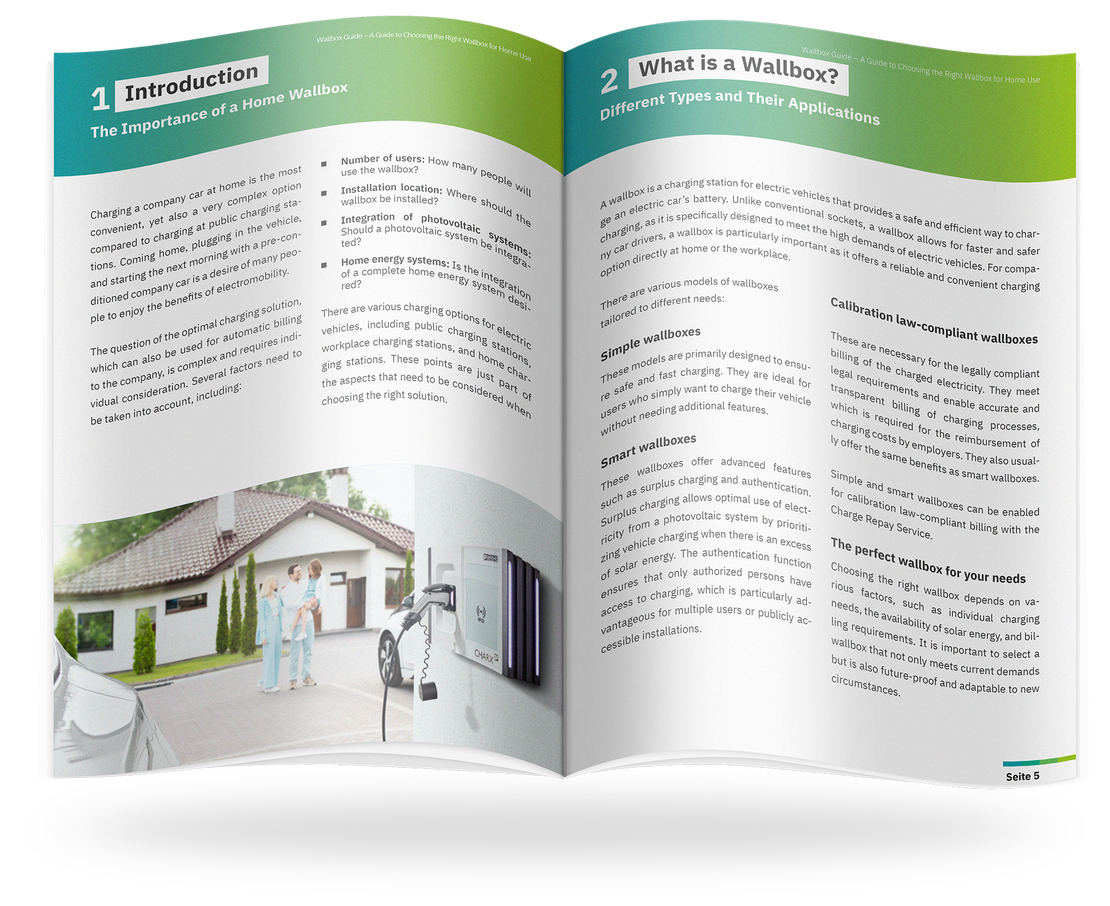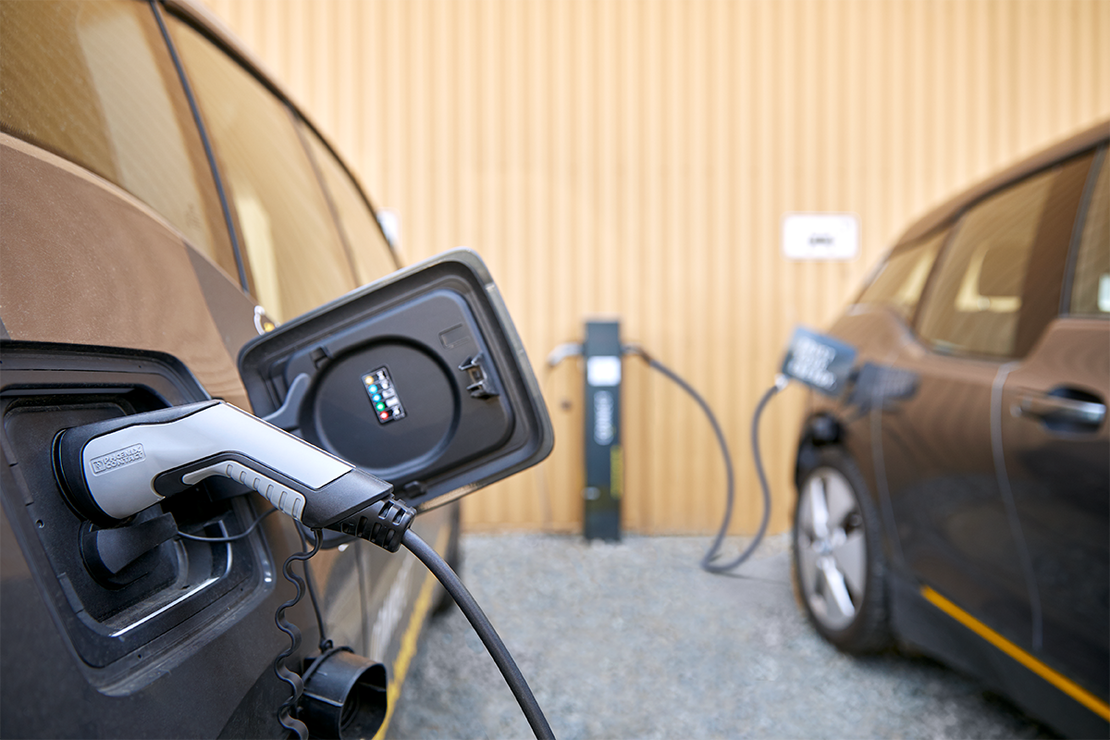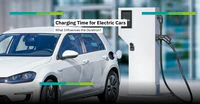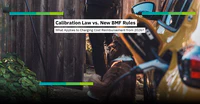Not every wallbox has an electricity meter. A wallbox with an electricity meter is important if you want to monitor and bill the exact energy consumption of your electric car. In this article, we describe when a wallbox with an electricity meter is useful, when it is necessary, and what different types of meters exist.
Is an Electricity Meter Integrated into Every Wallbox?
There are different wallbox models that offer various functions. A simple wallbox without a built-in electricity meter guarantees only the safe charging of an electric car without any measurement and/or control options. This variant is often sufficient if no billing of the charging current of the e-car is required.
When choosing a wallbox with a meter, it is important to distinguish between different types of meters:
- Non-calibrated Meters: These measurements can only be used for statistical purposes. Billing based on these measurements is not allowed.
- MID-certified Meters: These meters comply with European measuring instrument standards and are calibrated during production. They are suitable for billing charging processes if only one vehicle is charged at the wallbox and private and business charging processes are not mixed. A wallbox without an electricity meter can be retrofitted with an external MID meter.
- Measurement and Calibration Law-compliant Meters: These meters are always integrated into the wallbox. The calibration-compliant meter is a crucial component to ensure the certification of the entire wallbox according to calibration law regulations. Such wallboxes meet legal requirements and are suitable for precise billing of the charging current for multiple users.
Some wallboxes also offer smart functions, such as:
- Programming Charging Times: Allows charging at cheaper electricity rates.
- Integration into Smart Home Systems: Offers additional comfort and control options. This also enables PV surplus charging .
What is a Smart Wallbox?
Smart wallboxes can have non-calibrated meters, MID-certified meters, or measurement and calibration law-compliant meters. What makes a smart wallbox are the following points:
Controllability and §14a EnWG
Smart wallboxes offer a variety of technical interfaces for controllability for energy management systems, such as for PV surplus charging or according to §14a EnWG (Germany). §14a EnWG allows network operators to regulate controllable consumption devices like wallboxes as needed to ensure grid stability. There are also various interfaces, such as apps or online portals, that make data and statistics available either only in the local network or worldwide via the internet.
Guide to choosing a Wallbox: Your comprehensive Guide!
Our guide provides you with important insights into the details you should consider before purchasing a wallbox. Learn about the key criteria to make the right choice for your home and company car.
REQUEST GUIDE
Authentication and Energy Measurement
Another important aspect is authentication. Many wallboxes offer the possibility to unlock charging processes via RFID card/chip or mobile phone. When it comes to energy measurement, the question arises whether the amount of electricity for the charging processes can be measured and what calibration/certification is in place.
Why Should We Measure the Charged Energy?
Most smart wallboxes offer the possibility to record individual charging processes with start and end times and the charged energy and provide this information in various ways. This data can be used for private statistics, creating an energy balance in combination with a PV system, or billing charging processes if the wallbox is used by multiple tenants or for company cars.
Not all energy measurements are the same
Depending on what the data is used for, it must be ensured that the measurement meets the requirements. For private or internal statistics, a non-calibrated measuring device is often sufficient. However, if the measurements are used as a basis for monetary billing, they must comply with measurement and calibration law. Here, an MID meter may be sufficient if billing is only done with one party.
When is a Wallbox with an Electricity Meter Worthwhile?
A wallbox with an electricity meter is useful in various areas of application and in some cases even legally required. In legally required areas of application where use by multiple parties is intended, a calibration-compliant wallbox should be used. A tip for fleet management and company car users: A non-calibrated wallbox can be retrofitted with the Charge Repay Service from Phoenix Contact . This way, it can be used by multiple parties and still be billed legally.
Useful Areas of Application:
- Wallbox Used by Multiple Parties: Wallbox sharing is cost-saving and convenient for home charging. An integrated electricity meter prevents billing disputes, and RFID access protection allows the consumption to be assigned to the respective users.
- As a Landlord: Landlords who install a wallbox for all parties in a rental house should choose a wallbox with an electricity meter to correctly bill the electricity consumption. Otherwise, billing becomes difficult.
Legally Required Areas of Application:
- Wallbox for Company Cars : For billing the electricity for company cars with the employer, an electricity meter is required.
- (Semi-)Public Charging Stations: (Semi-)public charging stations, such as in hotel or company parking lots, must be equipped with an electricity meter.

Wallboxes with MID-compliant Meter
Wallboxes can be equipped with an MID-compliant meter. The Measurement Instruments Directive (MID) is an EU directive that regulates the accuracy and nature of measuring instruments. An MID-compliant energy meter ensures that the energy flowing through a wallbox into an electric company car is accurately measured.
Important Points about MID-compliant Meters:
- Accuracy: Guarantees precise measurement of the charged energy. The specified deviations are precisely adhered to.
- Use: May only be used for billing with one party; private and business charging processes must not be mixed.
- Regulation: This exception was established by the 16 state calibration offices. More information can be found in a document from the Working Group on Measurement and Calibration (AGME).
Legal Restrictions:
A wallbox with an MID meter used for billing an electric company car may not be used for private charging processes for legal reasons.
If you want to know whether it is possible to retrofit a wallbox with an MID meter and what advantages and disadvantages this brings, read our article: Legal Billing: Retrofit MID Meter or Calibration-compliant Wallbox?
When is a Calibration-compliant Wallbox (with Calibration-compliant Meter) Required?
In Germany, a calibration-compliant wallbox is necessary if the electricity consumption is billed to third parties. The billed kilowatt-hours must exactly match the actually consumed kilowatt-hours. The charged amount of electricity must be immediately visible and verifiable for the user. Additionally, the measurement data must be tamper-proof, data protection compliant, and permanently stored.
Download our charge@home Guide now!
Our guide highlights the requirements for a home charging solution and explains what is needed to use it for legally compliant billing of company cars. Learn more about the installation of wallboxes, legal frameworks, and efficient billing solutions for home charging.
REQUEST GUIDE
Examples of Use:
- Paid Charging Options: In semi-public or public areas such as parking garages or customer parking lots.
- Billing Models: Billing can be done not only based on consumption but also with a fixed or time-dependent fee. This also includes billing models for company cars.
Wallbox for Company Cars and the Charge Repay Service
If charges are billed to multiple parties or multiple vehicles are charged at one charging point, a calibration-compliant wallbox is necessary for the legal billing of a company car. Here, the digital interfaces and data transmission are also part of the calibration or conformity assessment of the system.
To save costs or to be able to use already installed wallboxes that are not calibration-compliant, the Charge Repay Service offers the ideal solution. With the service, private and business charging processes can be legally recorded and billed at any home wallbox. You can easily retrofit any wallbox, whether calibration-compliant or not, with our service and bill legally.

Conclusion
A wallbox with an electricity meter offers numerous advantages, especially when it comes to accurately monitoring and billing energy consumption. It is particularly useful in multi-party houses, for wallbox sharing, and for landlords who want to correctly bill electricity consumption. It is also legally required in certain cases, such as for company cars or (semi-)public charging stations.
The choice of the right type of meter – whether non-calibrated, MID-certified, or a calibration-compliant wallbox (with integrated calibration-compliant meter) – depends on individual requirements and legal regulations. Smart wallboxes offer additional functions such as programming charging times and integration into smart home systems, which further increase comfort and efficiency.
With a wallbox that meets specific needs, electric car owners can not only save costs but also ensure that energy consumption is transparent and fairly billed. The Charge Repay Service also offers a flexible solution to retrofit existing wallboxes and bill legally. This makes charging the electric car at home or at work even easier and more efficient.




